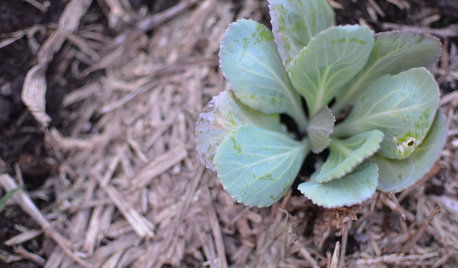Squash Bugs
sadie423
14 years ago
Featured Answer
Sort by:Oldest
Comments (18)
fountaam
14 years agolast modified: 9 years agoKimmsr
14 years agolast modified: 9 years agoRelated Professionals
New Bedford Landscape Architects & Landscape Designers · Erie Landscape Architects & Landscape Designers · Willowick Landscape Architects & Landscape Designers · Barrington Landscape Contractors · Deer Park Landscape Contractors · Franklin Landscape Contractors · Inglewood Landscape Contractors · Maywood Landscape Contractors · Saint Paul Landscape Contractors · San Antonio Landscape Contractors · Waldorf Landscape Contractors · Merrifield Landscape Contractors · Bonney Lake Decks, Patios & Outdoor Enclosures · La Palma Decks, Patios & Outdoor Enclosures · Orange County Decks, Patios & Outdoor Enclosuresorganicguy
14 years agolast modified: 9 years agoKimmsr
14 years agolast modified: 9 years agoslacker
14 years agolast modified: 9 years agosadie423
14 years agolast modified: 9 years agoKimmsr
14 years agolast modified: 9 years agoslacker
14 years agolast modified: 9 years agoKimmsr
14 years agolast modified: 9 years agothe_gurgler
14 years agolast modified: 9 years agoslacker
14 years agolast modified: 9 years agoorganicguy
14 years agolast modified: 9 years agotlouise
14 years agolast modified: 9 years agorhizo_1 (North AL) zone 7
7 years agoRichard Brennan
7 years agolast modified: 7 years agooliverisaac
7 years agojolj
7 years ago
Related Stories

EDIBLE GARDENSSummer Crops: How to Grow Squash
Almost foolproof and with cheerful flowers, squash comes in a wide range of varieties to plant in spring
Full Story
FARM YOUR YARDHouzz Call: Home Farmers, Show Us Your Edible Gardens
We want to see where your tomatoes, summer squashes and beautiful berries are growing this summer
Full Story
REGIONAL GARDEN GUIDESMid-Atlantic Gardener's September Checklist
Squash, anyone? Cool-season veggies are suiting up for the garden, while summer's last blooms are winding down
Full Story
FARM YOUR YARDAdvice on Canyon Farming From L.A.'s Vegetable Whisperer
See how a screened garden house and raised beds help an edible garden in a Los Angeles canyon thrive
Full Story
EDIBLE GARDENSHow to Grow Your Own Sweet Summer Crops
This guide will help any gardener get started on growing the freshest warm-season veggies and berries for summer
Full Story
EDIBLE GARDENSGarden BFFs? Why Your Vegetables Are Begging for Companion Plants
Foster friendships among plants for protection from pests, pollination support and color camaraderie
Full Story
EDIBLE GARDENSSummer Crops: How to Grow Pumpkins
Start in spring to grow your own fall decorations and have plenty left for pies
Full Story
BENEFICIAL INSECTSAttract Pollinators for a Productive Edible Garden
You can lure bees, butterflies and birds into your yard with the right flowers and nesting spots
Full Story
GARDENING GUIDESOrganic Matters: Thwart Insect Pests With Trap Crops
Add a few sacrificial plants to your garden to lure insects away from the harvest
Full Story
GARDENING GUIDES10 Easy Edibles for First-Time Gardeners
Focus on these beginner-friendly vegetables, herbs, beans and salad greens to start a home farm with little fuss
Full Story







oliverisaac